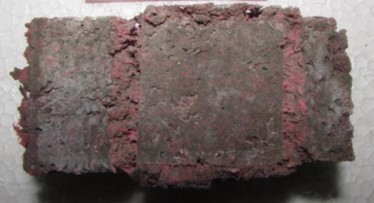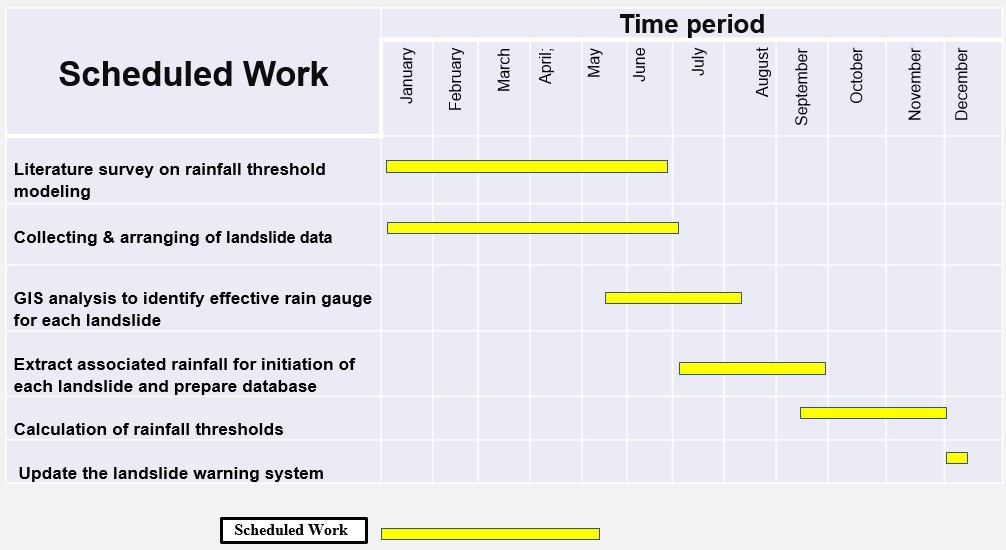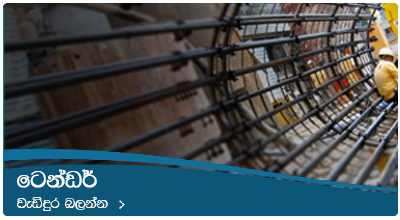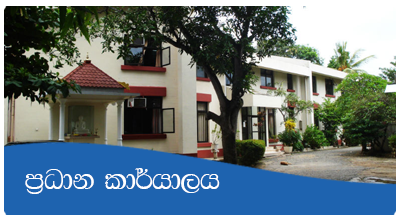1.Development of guidelines for selection of materials and products for construction industry
Recently, several buildings collapsed in different parts of the country as a result of substandard construction practices. Decades ago, such building collapses were quite unheard of. One of the reasons for such calamities is the improper materials selection for construction apart from poor workmanship. With the emerging construction sector in Sri Lanka, there are numerous construction materials and products available, either imported or manufactured, but many of those are novel to engineers, architects, quantity surveyors, building contractors and house builders. Hence, it is necessary to have all these construction materials and products compiled into a single document, indicating their applications, properties and the test methods or technical specifications to which the materials are required to test for. Thus, in future, this document, which is essentially a material and products selection handbook, will assist the construction professionals to select the most suitable material among a wide range of available materials.
2.Utilization of textile waste in the manufacturing of cement-based products
Sri Lankan apparel industry generates fabric off cuts, approximately 44,100 tons per year and major portion of fabric off cuts are considered as a waste material. This research focuses on utilization of shredded polyester spandex fabric offcuts in the cement matrix to make cement based products like partition panels, ceiling sheets, paving blocks, masonry blocks etc. Experimental investigation was carried out to find the optimum shredded fabric content to achieve the acceptable compressive strength and flexural strength of the cement paste-fabric mix. Various admixture such as polycarboxylic ether based super-plasticizers and methyl cellulose were used to improve the workability and strength properties of mix.
At present, this study is focus on development of suitable mix proportions for casting of paving blocks and masonry blocks.
 |
 |
This page still Under Construction
Development of geotechnical guidelines for preparatory work and reporting before issuance of a clearance to approve the construction of the substructure of urban / high-rise buildings
Background
Buildings are ‘live assets’ which are intimately interactive with human lives on their day to day lives. Therefore, it is expected that a building is designed and constructed in a manner that assures the safety of not only the occupants but also the adjacent properties.
It is alarming to see how haphazard the buildings are being built in Sri Lanka and the way the ongoing construction activities are done. It is easy to detect obvious non-compliances such as the construction without properly assessing the underground geological existence and without following a proper contingency plan and an appropriate construction sequence. As a result, adverse impacts caused to the surrounding built environment cannot be limited and controlled. In most instances, high rise buildings are constructed without proper geotechnical investigation. In addition, substructures of the buildings are designed with disregard to geotechnical parameters of the sites. It seems that some professionals do not to take geotechnical parameters seriously into consideration when designing substantive building structure.
As a measure to redress this situation, granting a clearance in terms of geotechnical engineering discipline, through a comprehensive filtering process is necessary and for this purpose, sound guidelines have to be immediately established.
NBRO as the mandatory body decided to develop geotechnical guidelines to assess the suitability of a substructure of a proposed urban or high-rise building, for the purpose of streamlining the process of assessing impacts of a development on adjacent properties and providing a geotechnical clearance for building approval.This geotechnical guideline will be treated as Sri Lanka’s ‘Geotechnical stability assessment guidelines for issuing a clearance on the substructure of urban / high-rise buildings’.
Objectives
- Establishment of guidelines for issuing a geotechnical clearance by assessing the impact of the present development on adjacent properties
- Streamlining the process of providing approval for building construction or improvements
- Enhancement of the safety of proposed & adjacent buildings and the public as a whole.
Supervisors of this research project are: Dr. U. P. Nawagamuwa (Senior Lecturer – University of Moratuwa) and Mr. K.N. Bandara (Director – Geotechnical Engineering Division).
Design a Transitional shelters for disaster affected communities
An emergency shelter is a place for people to live temporarily when they cannot live in their previous residence, similar to homeless shelters. The main difference is that an emergency shelter typically specializes in people fleeing a specific type of situation, such as natural or man-made disasters, domestic violence, or victims of sexual abuse. A minor difference is that people staying in emergency shelters are more likely to stay all day, except for work, school, or shops, whereas in homeless shelters people are expected to usually stay elsewhere during the day, returning only to sleep or eat. Emergency shelters sometimes facilitate support groups and provide meals.
Post-disaster emergency shelter is often provided by organizations or governmental emergency management departments, in response to natural disasters, such as a floods or earthquakes. They tend to use tents or other temporary structures, or buildings normally used for another purpose, such as a church or a school. These settlements may be inhabited for the entire duration of the reconstruction process and should be thought of more as settlements than shelter and need to be planned with respect to water supply, sanitation and livelihood opportunities.
Disaster Relief (DR) shelters play a vital role following a large-scale disaster and they are an important part of disaster response and recovery. DR shelters are used to provide private and secure places for people to live who have left or lost their usual accommodation as result of a disaster. These shelters not only provide immediate and short-term shelter for the victims of a disaster, but they also help them to recover from the trauma of a disaster as well as provide a base to start the process of rehabilitation. A review of the literature, case studies, guidelines and reports relating to the design of DR shelters indicates that their provision and performance are not currently as effective as they could be. A lack of adequate consideration with climatic conditions, locally available materials and skills, cultural and social issues, delays, cost constraints and poor location selection for DR shelters have each been identified as sources of poor performance contributing to an unacceptable standard of living. Moreover, there seems to be a lack of sufficient consideration with regard to the design of DR shelters for future storage and re-use.
The research is focused on design & provision of disaster relief shelters. Provision of shelter needs in disaster situation remain a major challenge for government & humanitarian organizations. Disaster shelters are considered as vital for personal safety, climate protection, security and resistance to diseases and ill health (IFRC/RCS, 2013). These shelters are commonly used until displaced people are being rehoused in new safer location or in rehabilitated original location. Disaster relief shelters may be used for a period of several months to may be few years after a disaster according to the local conditions. Therefore, a number of factors should be taken into consideration when planning & designing a shelter. The research is focused on following objectives to achieve the target.
- Introduce designs for transitional shelters to Sri Lanka
- Establish guidelines for providing shelters for disaster-affected communities
A thorough literature review will be carried out to explore the available knowledge in this field. Based on the literature and the experience of the researchers a new design will be developed for transitional shelters. Considering the development model for a transitional shelter, a set of guidelines will be developed for providing of disaster shelters during a disaster event. Once the model for shelter and guidelines are completed stakeholder consultation will be carryout to obtain ideas of different stakeholders. As the design is finalized with set of guidelines, a sample shelter will be constructed and applicability to the real ground situation will be checked.
Determination of regional and local rainfall thresholds for landslides in Sri Lanka
Background
Landslides are the most recurrent and prominent disaster in Sri Lanka. The country has been subject to a number of severe landslide disasters that resulted in a significant loss of life. Many causative factors were identified and it is important to note that the most significant factor that influenced the occurrence of landslides was rainfall. Seasonal distribution of landslides demonstrates a clear link with the distribution of the rainfall.
National Building Research Organisation (NBRO) is the focal point for landslide studies and related concurrent research in Sri Lanka. Currently, NBRO has defined three landslide triggering rainfall thresholds for the whole country. This study focuses on to the generation of the local rainfall threshold values for each of the landslide-prone districts by observing the relationship between historical landslides and relative rainfall. For the purpose of establishing an empirical relation for rainfall -landslide in Sri Lanka, data of 250 landslide events in the past 15 years were analyzed. Hourly & daily rainfall data were used in the analysis.
The importance of developing localized rainfall thresholds has been long recognized by the NBRO. However, due to the absence of a comprehensive landslide database and sufficient rainfall data, subsequent conflicts in the field will be inevitable. The effect of precipitation on the landslide initiation differs from one location to another. Therefore, while issuing early warnings on any landslide occurrence, it is problematic and misleading to predict a landslide in a particular local area if regional rainfall threshold is used for the prediction. So, the necessity of locally defined rainfall thresholds has been treated as technically important and also as an urgent requirement in the country.
Aims and objectives of the project
The proposed study aims at identifying the effect of rainfall on landslide occurrence in order to establish rainfall thresholds for landslide initiation using several empirical and statistical methods.
In this context, the following specific project objectives have been identified;
- Generation of a comprehensive landslide database on historical landslides in Sri Lanka
- Understanding the impact of rainfall on the occurrence of landslides
- Establishment of rainfall thresholds for vulnerable districts using hourly, daily and cumulative rainfalls
- Use of probabilistic methods to approach higher accuracy
- Improving the accuracy of current Early Warning System using the newly defined thresholds
- Validation of results of the study
Time framework in 2018
 |
Preparation of Technical Guidelines for Building Demolition Work in Sri Lanka
Objective of this research project is the introduction of a regularized mechanism for “Safe Construction Practices in Building Demolition” to the construction industry in Sri Lanka.
As the Research methodology the following project activities will be carried out:
- Literature Survey/ Study of different codes and practices adopted globally in building demolition work and documentation of survey findings
- Literature Survey/ Study of planning & execution processes in building demolition work currently adopted in Sri Lanka and documentation of survey findings
- Analysis and synthesis of above survey findings
- Synthesis of the above factors and formulation of a set of Technical Guidelines on Planning & Execution of Building Demolition Work with special reference to the urban context of Sri Lanka.
As the Research Outcome, a Technical Guideline for Building Demolition Work in Sri Lanka will be introduced in view of establishing a regulatory mechanism on safe construction practices in building demolition work in the construction industry in Sri Lanka.






























